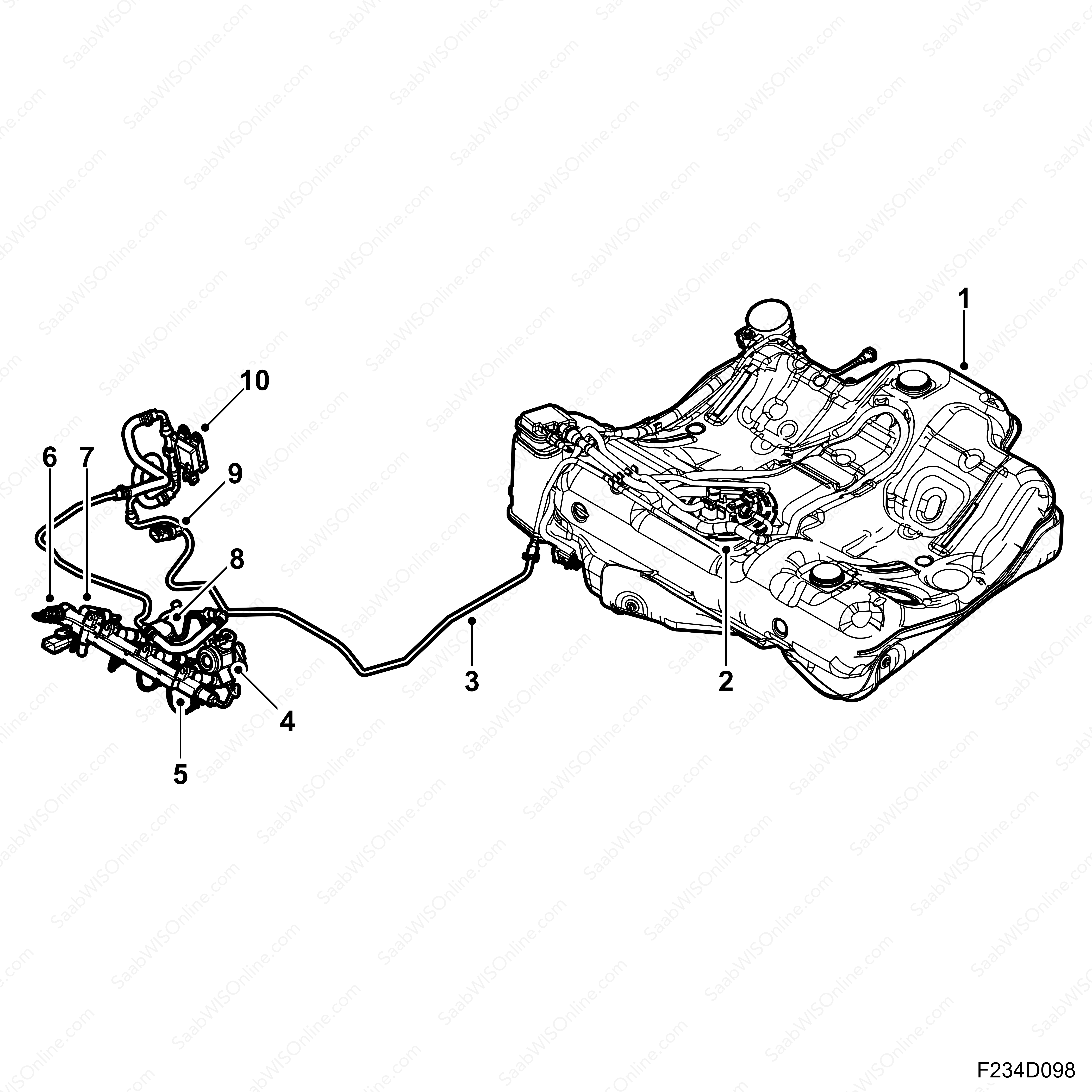Fuel system, brief description, E39
|
|
Fuel system, brief description, E39
|
|
2.
|
Unit, fuel pump (689), E39, with level sensor, fuel (46), E39, and engine, fuel pump (323), E39
|
|
4.
|
Fuel pump, high pressure (801), E39
|
|
6.
|
Pressure sensor, fuel pressure, fuel rail (653), E39
|
|
7.
|
Injector cyl.1 (206a), E39
|
|
9.
|
Pressure sensor, fuel line (654), E39
|
|
10.
|
Sensor, ethanol content (780), E39
|
The fuel system works as follows: the electric unit, the fuel pump (689), E39, located in the fuel tank, sucks fuel from this using the integrated motor, fuel pump (323), E39, and builds up fuel pressure in the system.
There is also a fuel filter integrated in the engine fuel pump (323).
An ethanol content sensor (780), E39, is mounted in the fuel filter to determine the fuel's ethanol content.
Located in the fuel pipe after the ethanol content sensor, slightly before the high-pressure fuel pump, there is a fuel pulsation damper fitted as part of the low-pressure fuel pipe.
The pressure of the fuel in the low-pressure fuel pipe is then increased in the high-pressure fuel pump (801), E39, which is mounted on the engine. The fuel with increased pressure then travels via the high-pressure fuel pipe to the fuel rail.
Petrol is injected into the cylinders by injectors (206a-d), which are electric solenoid valves fitted in the cylinder head close to the intake valves and connected through a common fuel rail.
The opening times of the injectors are controlled by electrical impulses from the engine control module.
There are two pressure sensors in the system. The fuel line pressure sensor (654), E39 measures the fuel pressure in the low-pressure fuel pipe and sends a signal to the SCM control module (587), E39. The fuel rail fuel pressure sensor (653), E39 measures fuel pressure in the fuel rail and sends a signal to the ECM control module E39 (590).



